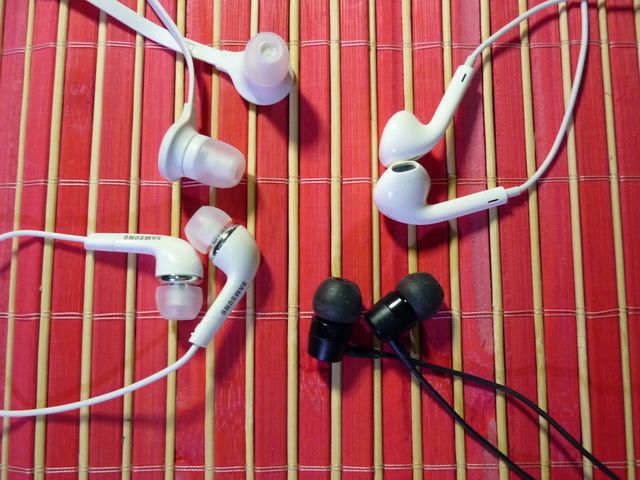
Spec
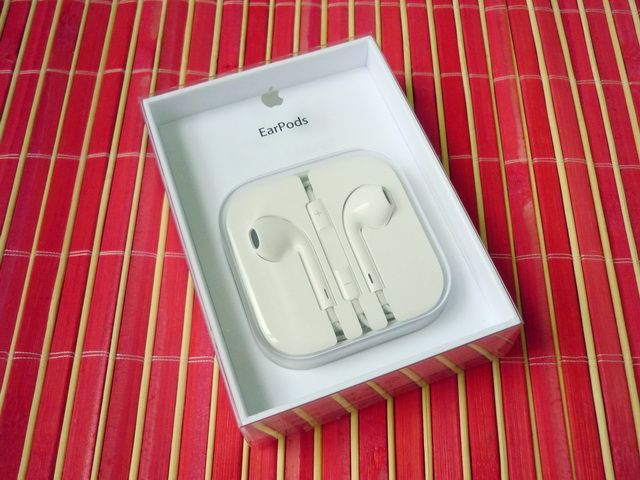
Apple Earpods
Impedance: 42ohm (estimated)
CTIA standard
Mic, call button, volume control
Compatibility:
• iDevice: Full
• Android: Mic and call button only
MSRP: $29
Online Price: $29
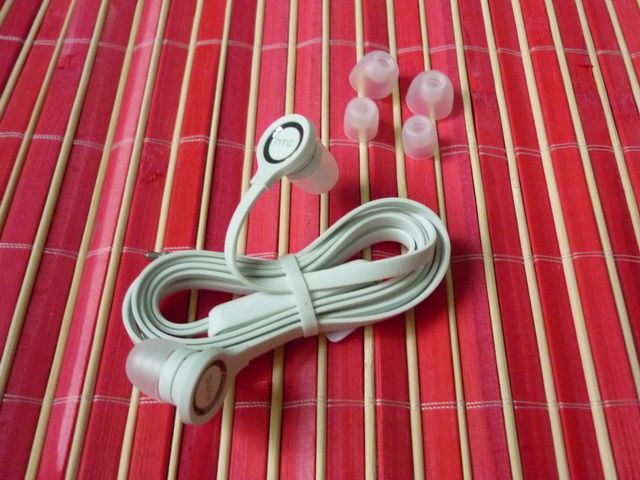
HTC RC-E190
Impedance: 50ohm (estimated)
CTIA standard
Mic, call button, volume control
Compatibility:
• iDevice: Mic and call button only
• Android: Full
MSRP: n/a
Online Price: $21
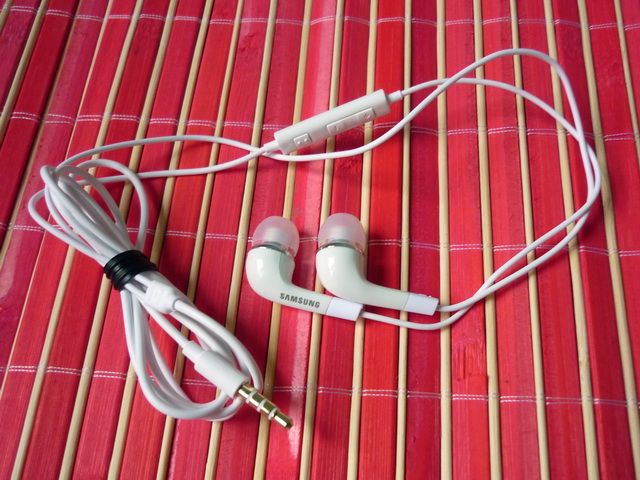
Samsung EHS64AVFWEG
Impedance: 33ohm (estimated)
CTIA standard
Mic, call button, volume control
Compatibility:
• iDevice: Mic and call button only
• Android: Full
MSRP: $25
Online Price: $6
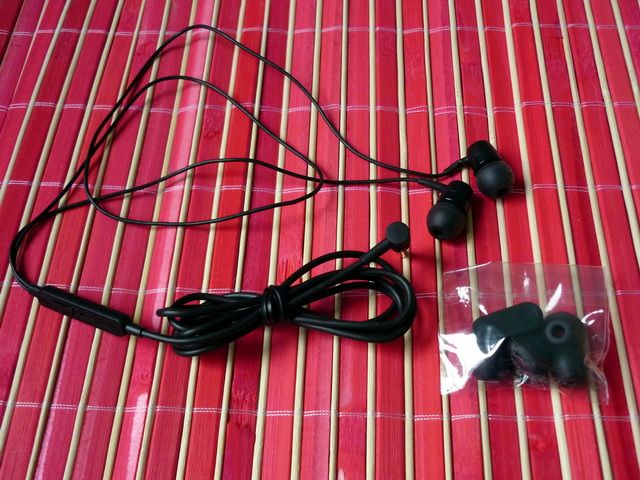
Sony MH750
Impedance: 17ohm (estimated)
Driver: 9.2mm dynamic
CTIA standard
Mic and call button
Compatibility:
• iDevice: Full
• Android: Full
MSRP: $50
Online Price: $15
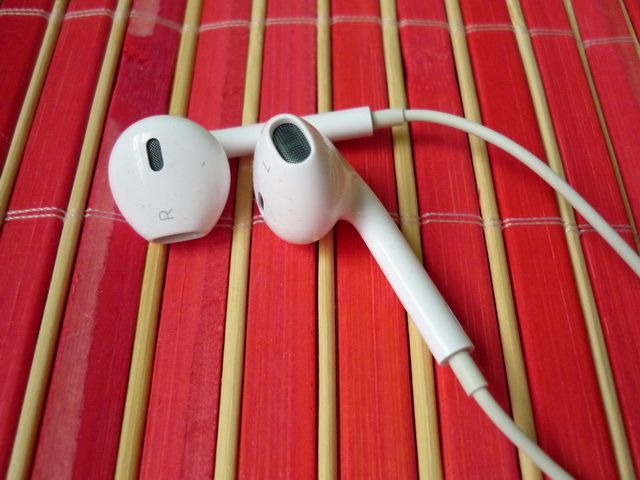
Apple Earpod close up
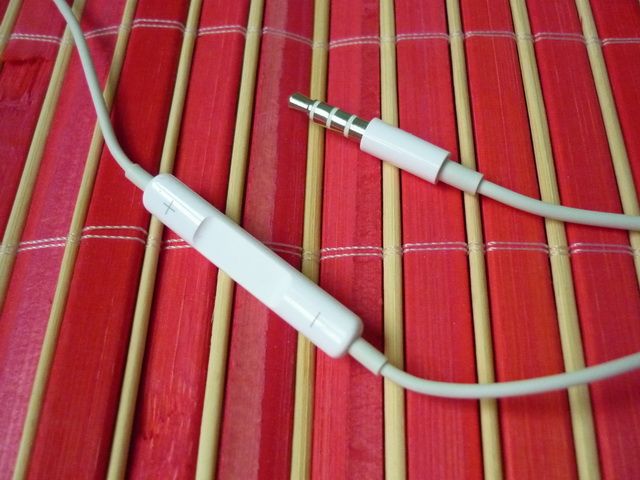
Design
Earpods is already an instant classic in design the first date it was introduced to the public. EHS64AVFWEG (EHS64# for short) and MH750 are both sensible in design, but RC-E190 just looks like it forget to shed a layer of plastic skin when it left the factory. Too much “Beats”, if you like.
Winner: Earpods
Loser: RC-E190
Build Quality
Apple has the best overall build quality. EHS64# can use a better cable but it isn’t actually bad per se - same can be said to MH750. RC-E190 has oversized parts so it looks very durable even though it is unattractive.
Winner: Earpods, followed not far behind by RC-E190
Unimpressive: EHS64# and MH750
Ergonomics
Earpods disappear as fast as you put it in your ear. As the only earbud in the shootout, it is non intrusive and therefore has the best ergonomics and comfort. MH750 is in second place as it has the smallest earpiece and the Hybrid like eartips are a plus. The J-cord also works in its advantage to keep the cable on the side. Samsung fairs well but nothing remarkable to speak of. HTC is last because of the large earpiece and eartips, not to mention the heavy cable.
Winner: Earpods
Loser: RC-E190

HTC RC-E190 close up
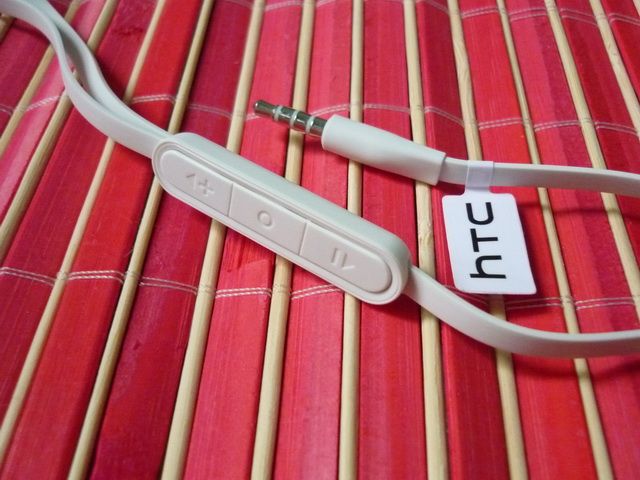
Isolation
One thing that Earpods doesn’t offer is isolation. For the other three, it is about average, or around -20dB. Not great by any mean, but at least they have some for the busy street.
Loser: Earpods
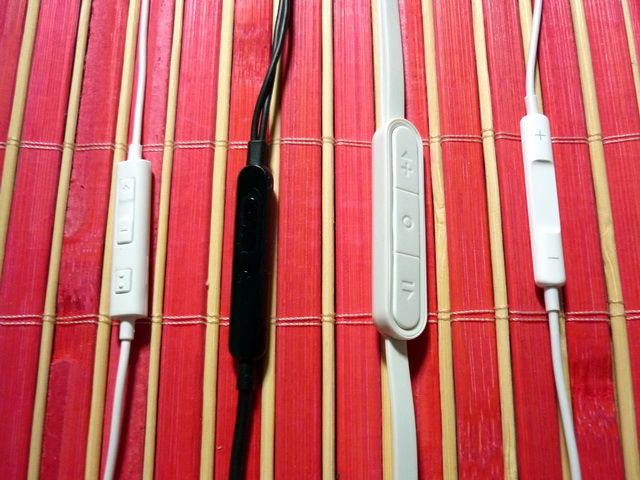
From left: Samsung, Sony, HTC, Apple.
Microphone Sensitivity
Wore in their natural position (*not holding the mic up) and tested by recording the same voice onto a Nano 7G, HTC is winning with a noticeable lead, even when its mic has the furthest position of all the headset. Earpods is head-to-head with Samsung. Both are decent but nothing great. MH750 is trailing way behind with a much dimmer recording.
Winner: RC-E190
Loser: MH750
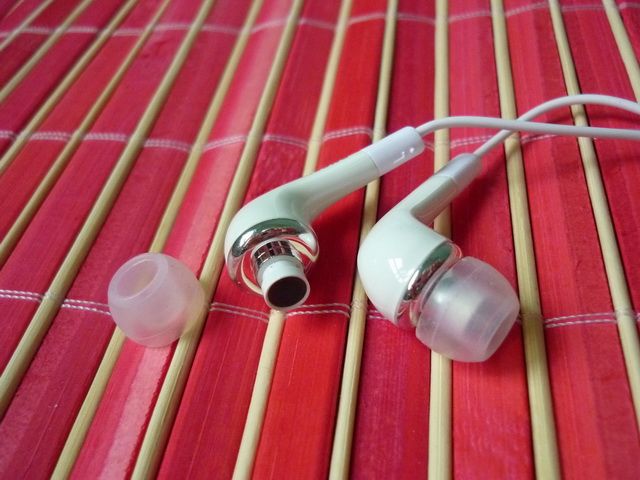
Samsung EHS64# close up
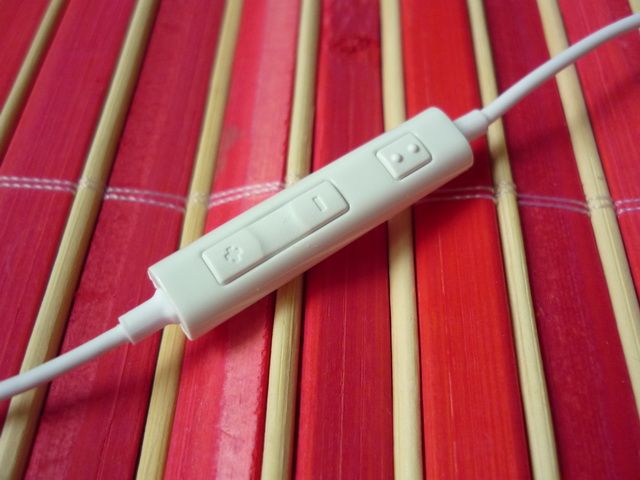
Sound Quality
Each models have been given over 50 hours of burn-in.
Apple’s new ‘earpods’ is indeed a better sounding earphone than the last generation (which isn’t bad in itself). However, gone is the more lively and balanced presentation and come is the very bassy and somewhat darkish sound. It has what possibly could be the best low-end rambling of any earbud and a well textured and very sweet vocal, but the treble range takes a big hit and a lot of detail and air are lost. At best, Earpods' SQ is around mid range for an earbud (rough equal to an entry level IEM) – good, but not great.
RC-E190 looks like a-JAYS series with its flat cable design and actually sounds somewhat like a-JAY Two as well. Very warm, decently big bass with a very smooth treble. What it does better than a-JAYS two is better air and detail, but what it doesn’t compare as well is its bland mid range. Consider that it is just a little less than half the price of a-JAYS Two, RE-E190 isn’t too bad as a stock, but certainly nothing remarkable to speak of as well.
EHS64# is warm and lively with a very mild U-shaped sound. Big hitting bass, decent spaced mid that isn’t too sweet or forward, crisp treble that is just a tiny bit grainy. By far the best sound and most balanced in this shootout, it compares well to IEM such as VSONIC GR99 and GR02 or DUNU Trident on overall performance. Not too shabby for a stock actually.
MH750 is a side project of MH1 with the goal of maintaining the same tuning, but with cheaper cost of manufacturing. They share an almost identical FR curve that is warm and sweet, though MH750 does sound a tiny bit darker. While MH750 still compare really well next to EHS64# with a sweeter and more textured mid but less lively presentation, it falls short when compared to its big brother, the MH1. The FR curve might sound similar between the two, the overall refinement, air, soundstage, layer, position and resolution just not as good on the MH750. Then again, you would expect it to be a step down of MH1. Like EHS64#, it is also fairly nice sounding as a stock and compare decently to VSONIC and DUNU too.
On a Glimpse: EHS64# >= MH750 > Earpods > RC-E190
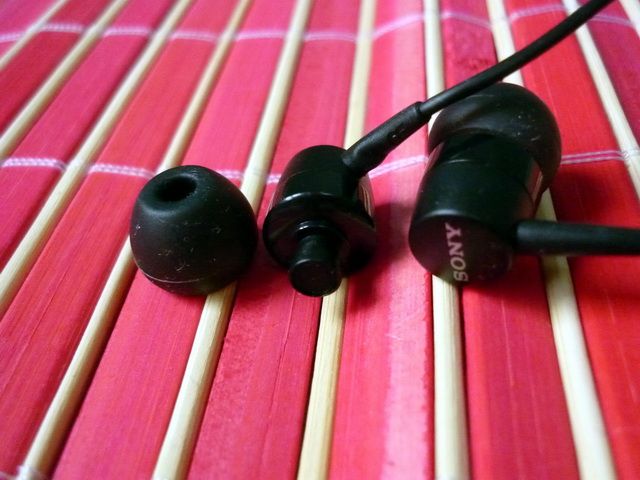
Sony MH750 close up
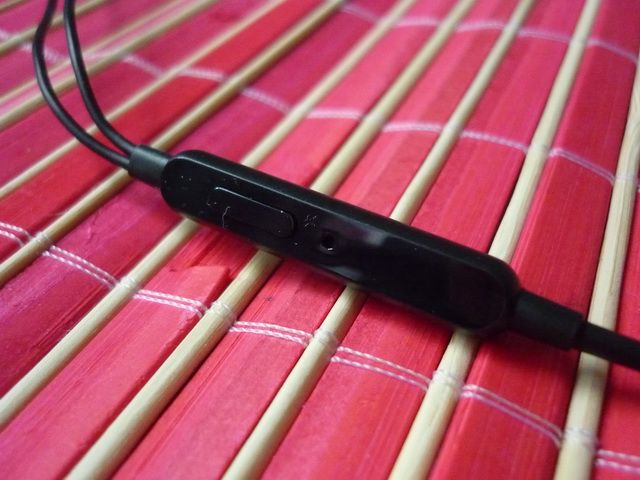
Side Note
Here are few notes about these headsets that don’t seem to fit elsewhere.
Like previous iBud, Earpods comes in two flavours. One is the normal version with the mic and remote that sold for $29. The other one, which comes with iPod, doesn’t have the mic and remote even though iPod supports all the functions. The simplified version is not for sale , but Apple shouldn't have cheap out on the iPod and should have included the full mic and remote version instead.
HTC doesn’t have official store in most part of the world and their accessories ain’t exactly easy to find. It would seem there are a lot of bulk packaging of their accessories around (same can be said to Samsung and Sony actually) but there is no easy way to tell if they are genuine or not. To make sure I get the real RC-E190, I have to order it all the way from UK via a reputable online retailer. Given the overall performance, I am not sure it is the smartest thing to do.
Samsung EHS60# is part of my Galaxy Tab 7+ so I can absolutely sure it is real. EHS60 is actually a series of the same IEM, from the mic and call button only EHS60, to the OMTP version EHS64AVFWE with volume control for Galaxy S and previous Android model, to the latest CTIA version EHS64AVFWEG for post Galaxy S2 models which is what included in this review. So be careful when ordering.
MH750 too comes in different flavours. What I have reviewed here is the current / latest version that is tuned to the same FR curve as MH1, but I was told the older version of MH750 sounds very different. You can’t tell them apart from the outside. The only way to be sure is to take off the eartips and look at the filter. If it is all black, it is the latest. If it is anything else, it is the older version. Sony is slowly replacing the older version with the latest version currently on their smartphone model, and the estimation of completion is 2013. So if you are buying a new 2013 smartphone model next year, it should come with the new MH750. If you are buying a current 2012 model, then it could be either one of the two.
Verdict
Granted none of the stock headset reviewed here are stellar in sound, they do all sound relatively decent for something that are essential free with the cellphone package. Their online price from a reputable retailer (i.e. Amazon) isn’t too bad either. Overall, the HTC headset is the weakest. I really won’t recommend you HTC user out there buying another one when your old one broke. Better just get something else. As for the other three, they are good for their price and okay if you get a replacement pair in for under $50. But if you want something better, you should set you price bucket higher to the $100 mark in order to find truly upgraded sound… unless of course you come across some outstanding deal like the previously reviewed MH1, but those are few and far between.





